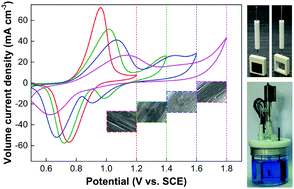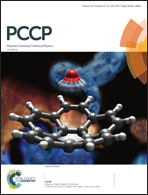Electrochemical evaluation methods of vanadium flow battery electrodes
Abstract
Various testing methods, such as cyclic voltammetry (CV) and electrochemical impedance spectroscopy (EIS), have been employed to evaluate the electrode performance of vanadium flow batteries (VFB). Due to the variations in the testing devices and characterization parameters in the literature, a number of reported results are incomparable and even sometimes contradictory. In this report, a reliable device is proposed for the electrochemical characterization of electrode materials, and the parameter selection was demonstrated to be critical for achieving reliable evaluation and reducing the effects of side reactions. As for the structure of the graphite felt electrode, volume current density is proposed to replace the area current density as the main evaluation indicator. Furthermore, the effect of side reactions is discussed and the upper limit voltage of 1.60 V is found to be suitable in the charge process of VFB since selecting this value can greatly protect the active sites on the electrode and avoid the capacity fading caused by side reactions.



 Please wait while we load your content...
Please wait while we load your content...